
Gold digger is a term for a person, typically a woman, who engages in a type of transactional sexual relationship for money rather than love. [1] If it turns into marriage, it is a type of marriage of convenience.

Gold digger is a term for a person, typically a woman, who engages in a type of transactional sexual relationship for money rather than love. [1] If it turns into marriage, it is a type of marriage of convenience.

The term "gold digger" is a slang term that has its roots among chorus girls and sex workers in the early 20th century. In print, the term can be found in Rex Beach's 1911 book, The Ne'er-Do-Well, and in the 1915 memoir My Battles with Vice by Virginia Brooks. [2] The Oxford Dictionary[ clarification needed ] and Random House's Dictionary of Historical Slang state the term is distinct for women because they were much more likely to need to marry a wealthy man in order to achieve or maintain a level of socioeconomic status. [2] [3]
The term rose in usage after the popularity of Avery Hopwood's play The Gold Diggers in 1919. Hopwood first heard the term in a conversation with Ziegfeld performer Kay Laurell. [4] As an indication on how new the slang term was, Broadway producers urged him to change the title because they feared that the audience would think that the play was about mining and the Gold Rush. [5]
There exist several cases where female public figures have been perceived as exemplars of the gold digger stereotype by the public. The best-known gold digger of the early 20th century was Peggy Hopkins Joyce. Joyce was a former show girl who married and divorced millionaires. She was characterized as a gold digger during her divorce battle with Stanley Joyce during the early 1920s. Some have argued that she was the real-life inspiration for Lorelei Lee, the protagonist in Anita Loos’ 1925 novel Gentlemen Prefer Blondes [6] which holds gold digging as a central theme. Additionally, some have contended that the term "gold digger" was coined to describe her. [7] Former Olympian Eleanor Holm was dubbed the "swimming gold digger" for her divorce contest with Broadway impresario Billy Rose during the 1950s. [8] The press and public described model/actress Anna Nicole Smith as a gold digger for marrying multi-millionaire octogenarian J. Howard Marshall II. There was even a book published as a Little Blue Book (Little Blue Book No. 1392, Confessions of a Gold Digger, by Betty Van Deventer, 1929).
The recurring image of the gold digger in Western popular media throughout the 1920s and 1930s developed into an important symbol of a moral panic surrounding frivolous lawsuits. Sharon Thompson's research has demonstrated how public perception of the prevalence of gold digging has created disadvantages for female spouses without their own source of income in the negotiation of alimony cases and prenuptial agreements. [3] The gold digger stereotype triggered public discussions about heartbalm legislation during the 1930s, particularly breach of promise cases. Public outrage surrounding the image of frivolous lawsuits and unfair alimony payouts related to the gold digger archetype contributed to a nationwide push throughout the middle and late 1930s to outlaw heart balm legislation in the United States. [9] [10] [11]
The gold digger emerged as a dominant trope in American popular culture beginning in the 1920s. Stephen Sharot stated that the gold digger supplanted the popularity of the vamp in 1920s cinema. [12] : 143–144
By the 1930s, the term "gold digger" had reached the United Kingdom through a British remake of The Gold Diggers. While the film received negative critical reception, several sequels with the same title have been produced. [3]
In the 1930s, the gold digger trope was used in a number of popular American films, most notably Gold Diggers of 1933 , Gold Diggers of 1935 , Baby Face , Red-Headed Woman , Dinner at Eight , and Havana Widows . Film historian Roger Dooley notes that the gold digger is one of the most common of the “stock company of stereotypes that continually reappear in the films of the 1930s.” [13] Gold diggers in 1930s cinema were often portrayed in positive, sometimes heroic, ways. [14] [15] The character has featured in many films since the 1930s such as Gentlemen Prefer Blondes (1953) and How to Marry a Millionaire (1953), both starring Marilyn Monroe, or as a villainous foil, as in both versions of Disney's film The Parent Trap .
The gold digger image or trope appears in several popular songs, including "My Heart Belongs to Daddy" (1938), "Diamonds Are a Girl’s Best Friend" (1949), "Santa Baby" (1953), "She Got the Goldmine (I Got The Shaft)" (1982), and "Material Girl" (1984). Rap music's use of the "gold digger script" is one of a few prevalent sexual scripts that is directed at young African-American women. [16] The 2005 hit "Gold Digger (Kanye West song)" [17] was the ninth best selling and ninth most played song of the 2000s, according to People Magazine.
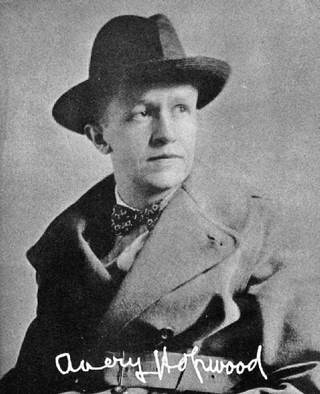
James Avery Hopwood was an American playwright of the Jazz Age. He had four plays running simultaneously on Broadway in 1920, namely "The Gold Diggers," "The Bat" and "Spanish Love" and "Ladies' Night ".
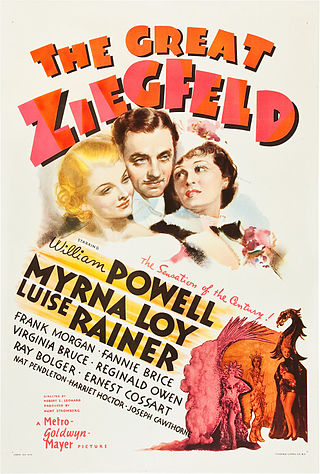
The Great Ziegfeld is a 1936 American musical drama film directed by Robert Z. Leonard and produced by Hunt Stromberg. It stars William Powell as the theatrical impresario Florenz "Flo" Ziegfeld Jr., Luise Rainer as Anna Held, and Myrna Loy as Billie Burke.
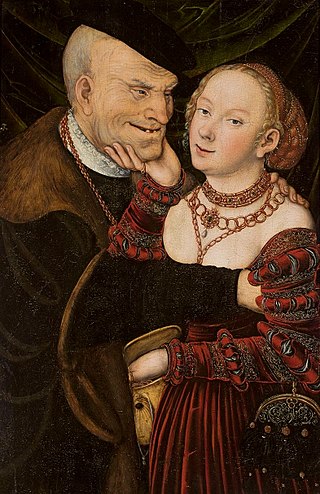
A trophy wife is a wife who is regarded as a status symbol for the husband. The term is often used in a derogatory or disparaging way, implying that the wife in question has little personal merit besides her physical attractiveness, requires substantial expense for maintaining her appearance, is often unintelligent or unsophisticated, does very little of substance beyond remaining attractive, and is in some ways synonymous with the term gold digger. A trophy wife is typically relatively young and attractive, and may be a second, third or later wife of an older, wealthier man. A trophy husband is the male equivalent.

The Ziegfeld Follies were a series of elaborate theatrical revue productions on Broadway in New York City from 1907 to 1931, with renewals in 1934, 1936, 1943, and 1957. They became a radio program in 1932 and 1936 as The Ziegfeld Follies of the Air.
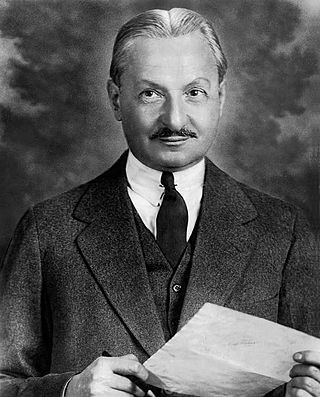
Florenz Edward Ziegfeld Jr. was an American Broadway impresario, notable for his series of theatrical revues, the Ziegfeld Follies (1907–1931), inspired by the Folies Bergère of Paris. He also produced the musical Show Boat. He was known as the "glorifier of the American girl". Ziegfeld is a member of the American Theater Hall of Fame.

A showgirl is a female performer in a theatrical revue who wears an exotic and revealing costume and in some shows may appear topless. Showgirls are usually dancers, sometimes performing as chorus girls, burlesque dancers or fan dancers, and many are classically trained with skills in ballet. The term showgirl is also sometimes used by strippers and some strip clubs use it as part of their business name.

Gold Diggers of 1933 is an American pre-Code musical film directed by Mervyn LeRoy with songs by Harry Warren (music) and Al Dubin (lyrics). The film's numbers were staged and choreographed by Busby Berkeley. It starred Warren William, Joan Blondell, Aline MacMahon, Ruby Keeler, and Dick Powell. It featured appearances by Guy Kibbee, Ned Sparks and Ginger Rogers.

Peggy Hopkins Joyce was an American actress, artist's model, columnist, dancer and socialite. In addition to her performing career, Joyce was widely known for her flamboyant life, numerous engagements and affairs, six marriages — four wealthy men, subsequent divorces, collections of diamonds and furs, and her lavish lifestyle.
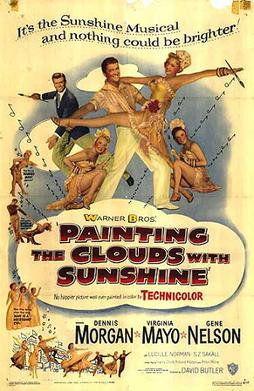
Painting the Clouds with Sunshine is a 1951 Technicolor musical film directed by David Butler and starring Dennis Morgan and Virginia Mayo. The film is a musical adaptation of the 1919 play The Gold Diggers by Avery Hopwood, the fourth film adaptation of the play following The Gold Diggers (1923), Gold Diggers of Broadway (1929) and Gold Diggers of 1933 (1933). The film is a jukebox musical, featuring popular songs from the 1910s to 1930s, including two songs from Gold Diggers of Broadway and one song from Gold Diggers of 1933.
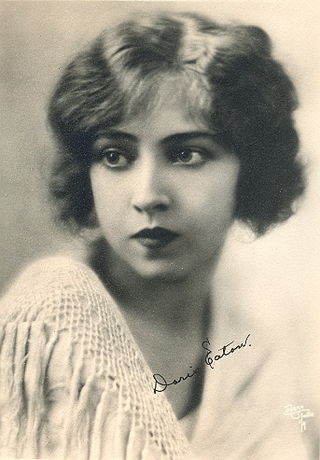
Doris Eaton Travis was an American dancer, stage and film actress, dance instructor, owner and manager, writer, and rancher, who was the last surviving Ziegfeld Girl, a troupe of acclaimed chorus girls who performed as members in the Broadway theatrical revues of the Ziegfeld Follies.
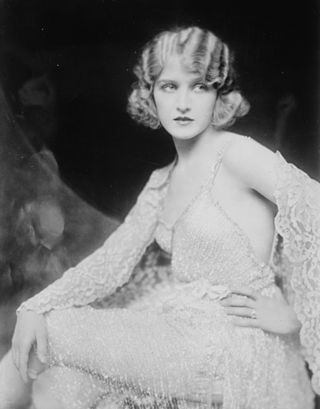
Mary Eaton was an American stage actress, singer, and dancer in the 1910s and 1920s, probably best known today from her appearance in the first Marx Brothers film, The Cocoanuts (1929). A professional performer since childhood, she enjoyed success in stage productions such as the Ziegfeld Follies. She appeared in another early sound film, Glorifying the American Girl (1929). Her career declined sharply during the 1930s.

Ina Claire was an American stage and film actress.

Anna Rebecca Pennington was an American actress, dancer, and singer who starred on Broadway in the 1910s and 1920s, notably in the Ziegfeld Follies and George White's Scandals.
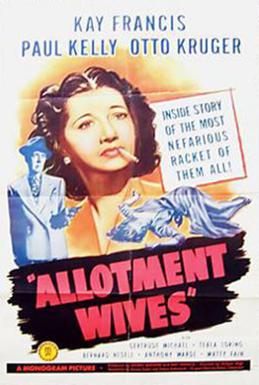
Allotment Wives is a 1945 American film noir directed by William Nigh and starring Kay Francis. Its plot is about an army investigator who tries to shut down a scam that preys on soldiers, and unknowingly falls in love with the woman behind it.

Lillian Lorraine was an American stage and screen actress of the 1910s and 1920s, and a prominent Ziegfeld Girl in the Broadway revues Ziegfeld Follies during the 1910s.
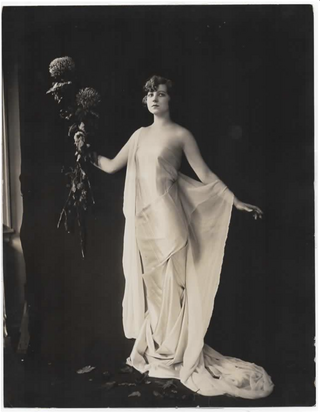
Allyn S. King was an American stage and film actress and singer who began her career in vaudeville, and later as a Ziegfeld Follies performer.

"A Pretty Girl Is Like A Melody" is a popular song written by Irving Berlin in 1919 which became the theme song of the Ziegfeld Follies. The first verse and refrain are considered part of the Great American Songbook and are often covered as a jazz standard.
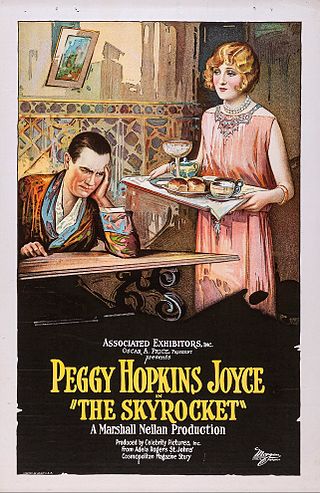
The Skyrocket is a 1926 American silent romantic drama film directed by Marshall Neilan and starring Peggy Hopkins Joyce. The film was based on the 1925 novel of the same name by Adela Rogers St. Johns and scripted by Benjamin Glazer.

The Gold Diggers is a play written by Avery Hopwood. It popularized the use of the term "gold digger" to refer to hypergamistic women who seek wealthy partners, as opposed to the earlier usage referring to gold miners. Producer David Belasco staged it on Broadway in 1919, with Ina Claire in the lead role. It was a hit, running for two consecutive seasons before going on tour.

Noel Francis was an American actress of the stage and screen during the 1920s and 1930s. Born in Texas, she began her acting career on the Broadway stage in the mid-1920s, before moving to Hollywood at the beginning of the sound film era.
...endorsed New York's new anti-heart-balm law...